The making of 'How To Art'
Showing for 3 nights only to fundraise for their 2 week season in Melbourne. How to Art is a low-brow exploration of the cost of creativity and the art of living and ticks a lot of boxes for people who enjoy comedy.
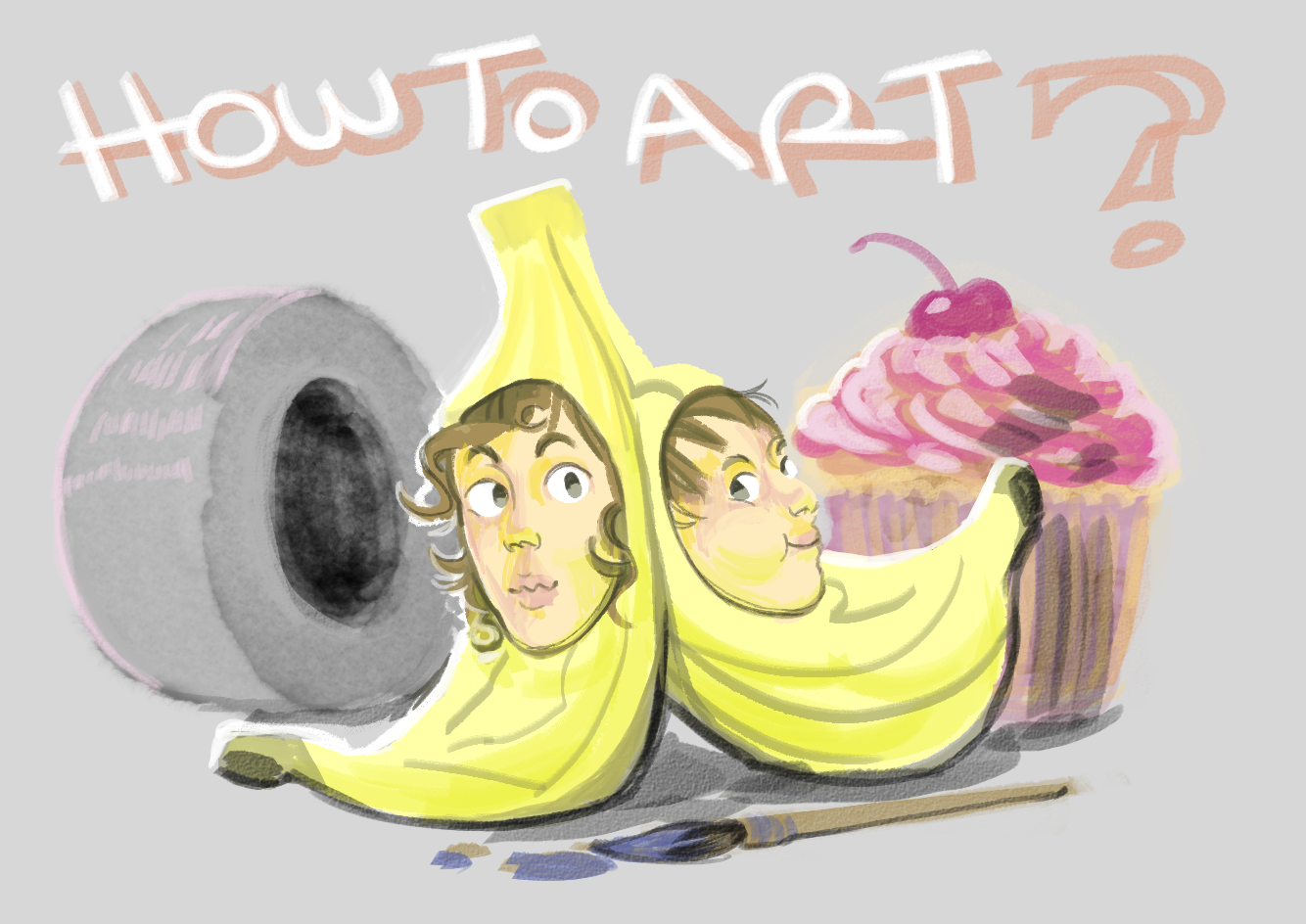
Amidst flirting with burnout and the grind under late-stage capitalism, sometimes I wish I could explore the modern condition in an unexpected way. Live theatre presents an opportunity to do this using the medicine of laughter.
In between semesters and on a cold winter evening I met with two award winning artists to hear about their latest creation.
How to Art is a physical comedy and contemporary theatre performance produced by Ratbags theatre company, on for three nights only this week at The Basement Theatre. It has been described as “a superb clowning commentary on the contemporary art scene” (John Smythe) and “a rich exploration of the art gallery experiences as seen through the eyes of two bananas” (Lexie Matheson). Bananas? Yes, this will be explained shortly.
The dreamers, champions and performers of this show are Katie Burson and Georgie Llewellyn.
To reflect the wandering directions of the interview, I will summarize our conversation into three loose sections: How the production came about, themes of the show, and their creative process. In general, the evening was a delight, and their fervor was evident as they described their process and philosophy that underpins How To Art.
Here's a link to the show:
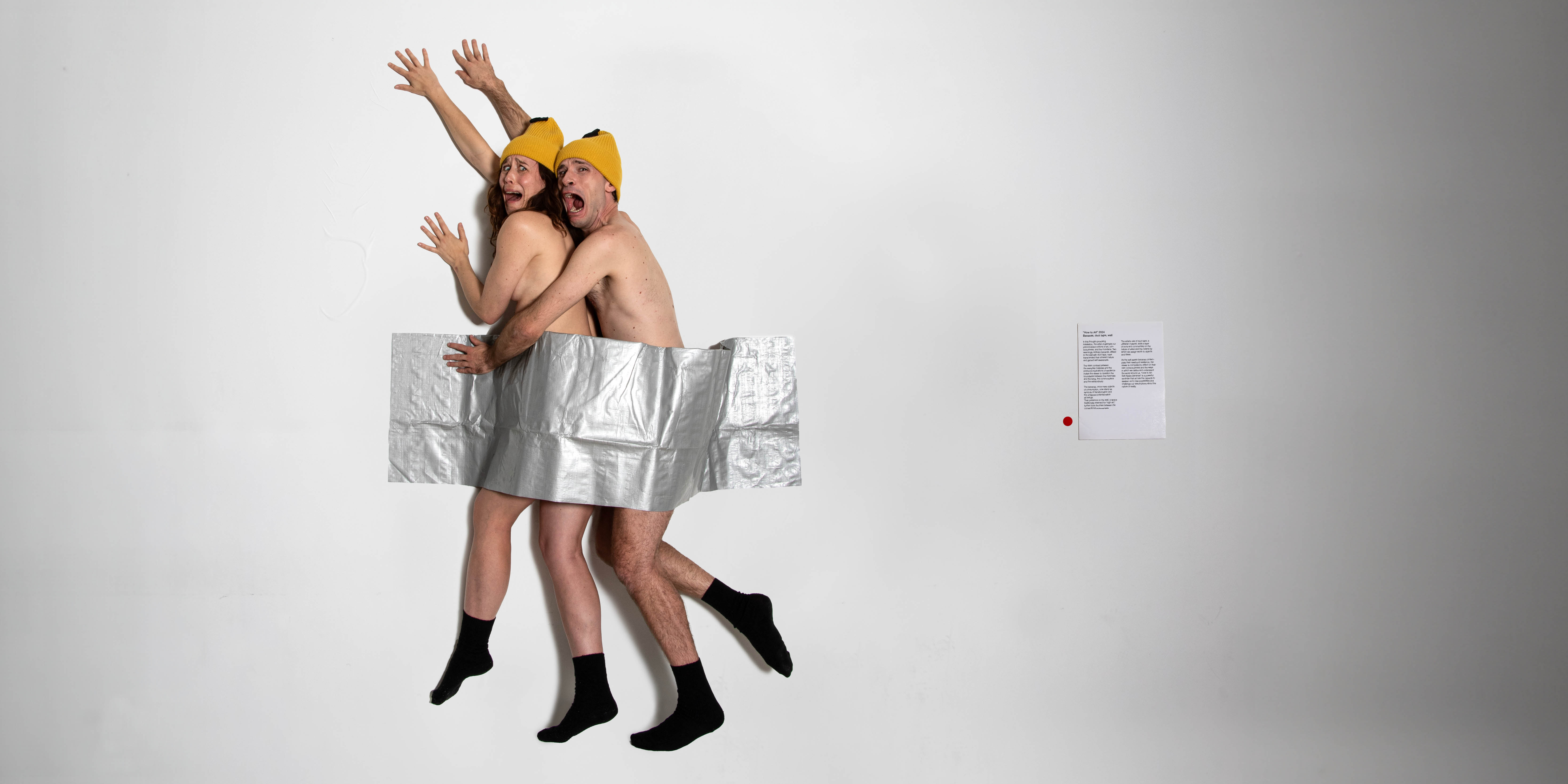
How the production came about: A brief history
Both Georgie and Katie studied performing and screen arts at Unitec but were introduced much later, approximately three years ago. “We had a similar background before the training” Katie said, thinking about the similarities between the two of them and what lead them to meet and begin working together. “We both worked with other companies doing different things and then Ratbags just emerged in the last two years.” Ratbags is Katie’s theatre company. “It’s the wrap-around company that supports this work and hopefully new works in the future”. Here’s the link to their website.
Work available for new theatre directors and performers in Tamaki Makaurau is scant (maybe nationally but that’s far beyond what I can research for this article). “It is often the case in New Zealand , people graduate and there is no work… we’re told to make a company, make shows, and that’s really become a culture”. In those early days Katie and Georgie traveled for their work and delved into clown training, a form of physical humor that is important to them both.
In a sentence, Ratbags theatre emerged over the past two years as a response to the need for longevity and continuity; a place to give their work a home and a life beyond one-off seasons.
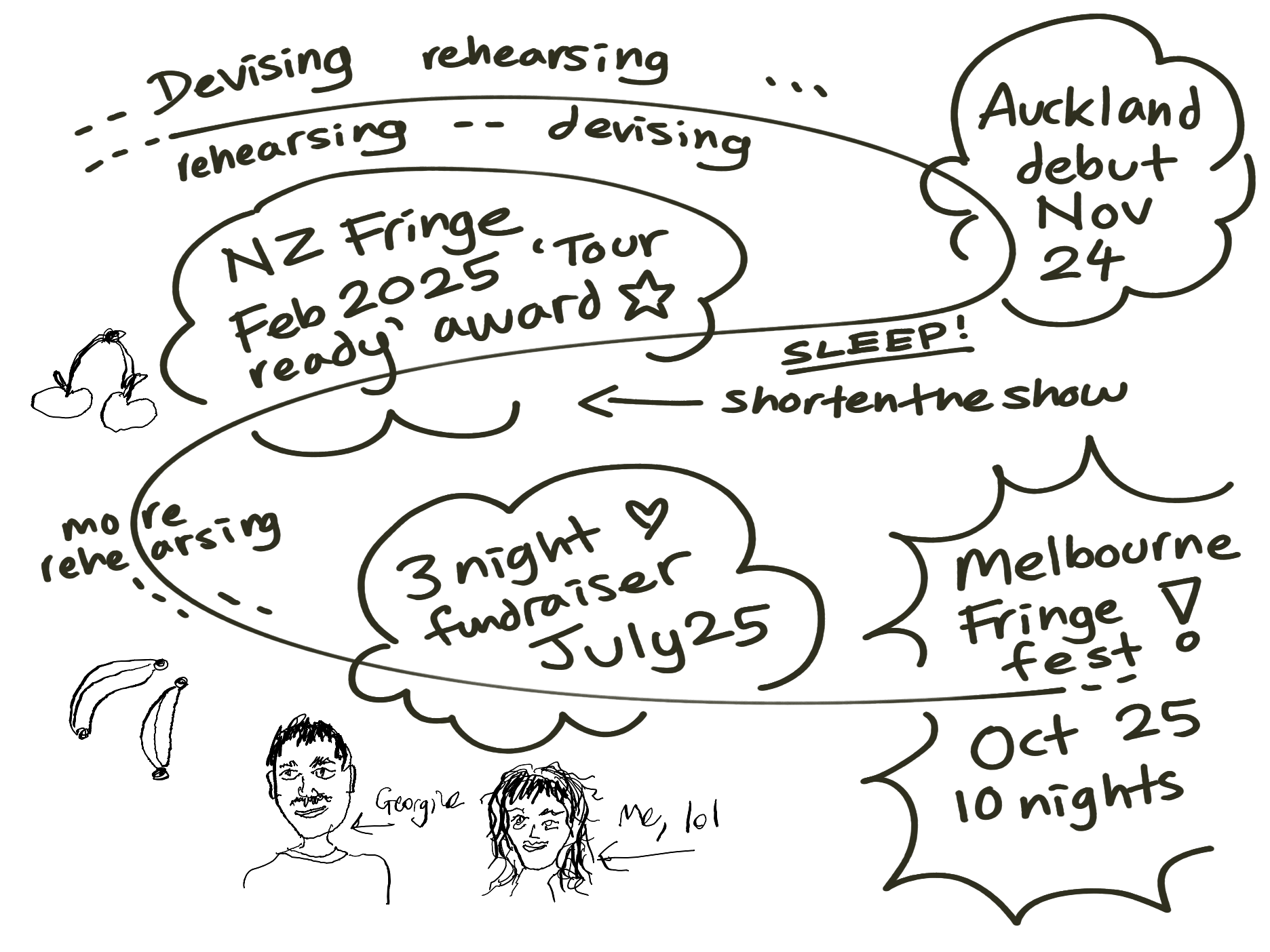
How To Art debuted at the Basement theatre in Tamaki Makaurau Auckland November 2024. Next, the duo refined the show down from 70 minutes to 60 minutes and showed again at Te Auaha in Poneke Wellington 2025. Here they won the Melbourne Fringe Tour Ready award. Fast forward to today and How To Art is showing at the Basement Theatre once again but with a special reason: The three-nights-only performance is a fundrasier for their Melbourne tour that’s just around the corner!
What is How To Art about?
This show is not a literal “how-to” on art — instead, a commentary on creativity, capitalism, and commodity. I can’t reveal too much about the show’s narrative since really you should go and see them this weekend for yourself, but I can give you a brief description. Here is an excerpt from their official media release:
Two bananas find themselves unexpectedly thrust into the spotlight of a prestigious art gallery, encountering their creator and questioning their purpose. These unconventional artworks, echoing the controversy of Maurizio Cattelan's infamous ‘Comedian’, embark on a transformative journey from pristine novelties to weathered exhibits, while grappling with profound existential questions: What is our identity? What purpose do we serve? And perhaps most pressingly, in this world for sale, who actually profits from our existence?
For further details about the show, click this button:
Context for the reference
Maurizio Cattelan is a big shot modern artist from Italy who auctioned a banana stuck to a gallery wall with duct tape for around US$120,000 in December 2019. In November of 2024 it sold for $6.2 million (coincidentally the same month that How To Art first debuted). This piece called Comedian is controversial to say the least. Was it stuck there as an absurd joke? Is it satire about wealthy art collectors? Who gets to decide the value of art? And what even is deemed worthy of the title Art? Comedian is at once a subject for contemplation, and literally just a fruit out of place.
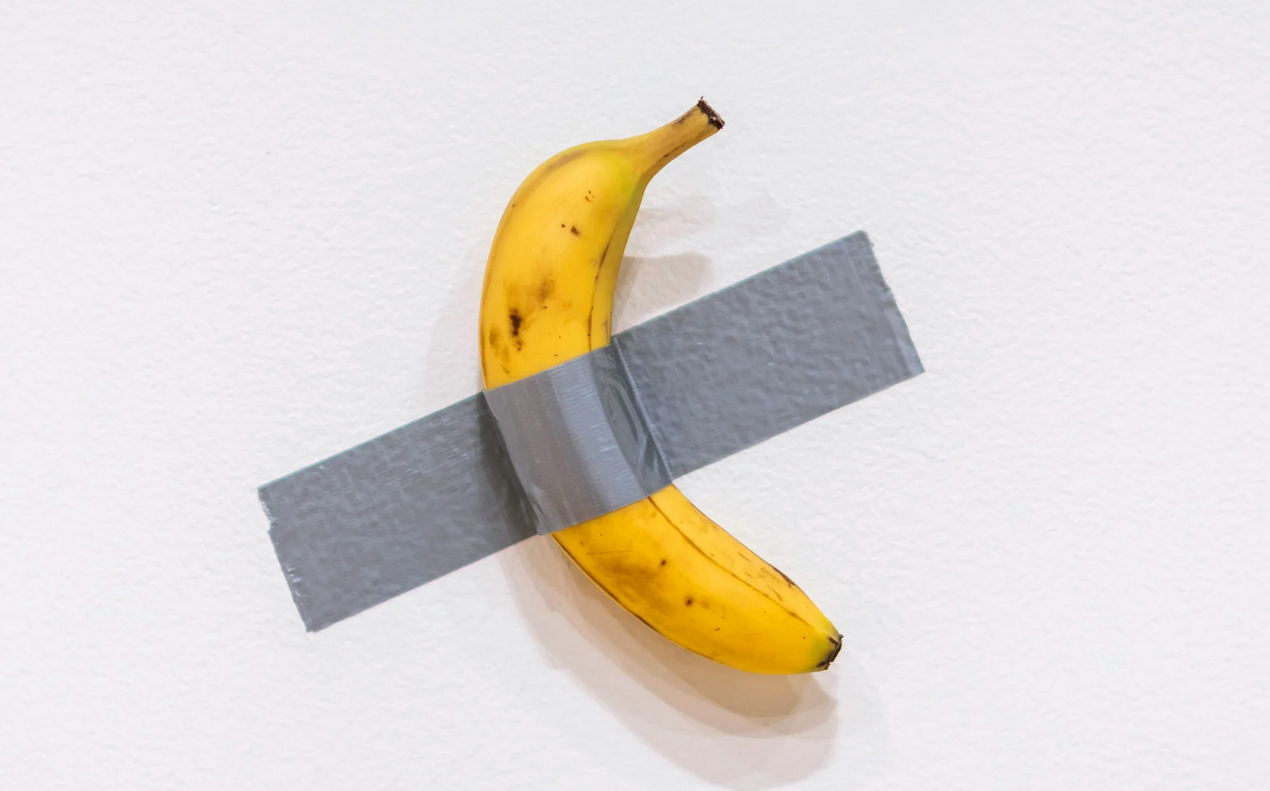
Katie and Georgie found the contradiction to be a wellspring for ideas. "[The art] is simultaneously thriving on it's own success but also pointing the finger back on itself" said Katie. "When we first started devising the show, we didn't know what the framing would be [except] that we wanted to devise around the artists experience." Actors are both the artists and the art produced. There is tension between commodity and creative expression.
"You can almost infinitely come up with new things about these bananas. Every time we are in rehearsal there is something new and we often joke that we can't stop devising" - Katie
Context for the choreography
The duo combined their performing skills and interests to develop a script that was part scripted and part clowning.
How to Art fuses physical theatre, clowning, object design, and film to transform the theatre into an immersive art gallery. Interactive tasks invite audiences to become contemporary art benefactors, offering a unique theatrical experience where no show is ever the same.
Built into the art of clowning is a direct and responsive connection with the audience. Clowns are spontaneous and learn to teeter on the verge of flop or joy. A risky business all for the pursuit of bubbling laughter. Clowning and rehearsed theatre productions are somewhat at odds. For example, an audience is free to walk around a street performing clown, but in fabric seats you wait patiently for the lights go up.
Georgie and Katie were committed to preserving the physicality and authentic silliness of clowning, yet also needed to balance this with a precisely crafted script.
“You might laugh when you least expect to, and we give time to these beautiful moments. It’s a balance of the interactive” – Georgie
Sweating for the creative process
During the interview Georgie and Katie took turns answering questions. I could see there was comfort and ease between them. This wasn't too surprising since they have been working together for 3+ years, yet I was curious about how their friendship influenced or informed the way they developed How To Art.
One person improvising on stage has some freedom to action split second choices. Two people improvising requires a certain level of synergy and the preparation is generally more demanding. Katie reflected that "right from the beginning we realized that we were going to have to work this really carefully". Georgie further explained that "a lot of our improvised moments are in a way still highly choreographed in terms of wraparounds; often to the minute detail we know what we're doing", reflecting the flow between them during performance. Whatever might happen, they had agreed to regularly check they are on the same page.
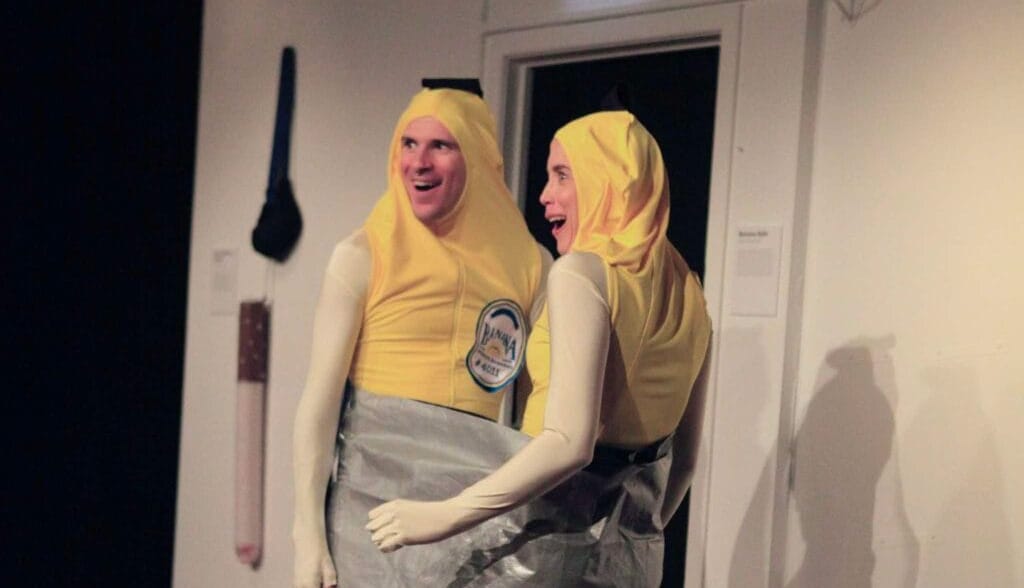
Katie and Georgie did not originally plan to play as bananas, yet "we spent hours figuring out the precise way to bunch our bodies together like a natural bunch of bananas". Though admittedly this is a bit odd, the general attitude with which the two approached this project particularly intrigued me. So much attention to detail, and a willingness to enjoy experimenting with new ideas.
“We’ve invested a lot into our characters – how they walk, how they talk, how they move, how they are connected with each other” – Katie.
Several times during the interview Katie spoke about their warmly held value for community and social well-being. The communities, the people, the socially supportive structures that surround artists are what declare that art matters. "We're going to make it matter by giving it a place to live, like giving it a home", one such aspiration behind the Ratbags co.
The state of the arts
Katie and Georgie juggle multiple jobs and seasonal gigs which apparently is the norm for artists now days. They’ve invested hundreds of unpaid hours into How To Art . “We’re essentially paying to make work because you know, we’re taking time off work, no one’s paying us” said Georgie. Katie agreed: "it's almost an impossible environment that we're going right now" referring to the lack of funding and the opportunities available in Auckland since COVID.
"it's not sustainable to be an artist at the moment." - Katie
Sometimes I wonder why there is not a stronger appetite for local arts projects and performances. "Talking about this stuff is challenging and difficult, but how can we talk about it in a way that breathes in joy and life? [During rehearsals] we wanted the process to be fun on the inside. We want the process to be joyful for the audience".
"How to Art was born from our frustrations with the impact of capitalism on creativity. This is our playful and poignant response to the challenges of making art in an environment with tightening funding and an ever-rising cost of living.” - Katie
Final Thoughts
From what I've been able to gather from the long and winding conversation with Katie and Georgie, How to Art is about resilience, creativity, and connection. "We say all this deep stuff, but on the surface level, it is a really silly clown show." said Katie reassuringly. If you've ever walked into a museum or art gallery, there's something in this show for you. Even just a general plight of our current modern world is enough to laugh along with and relate to these two bananas.
They are both friendly and welcoming, which is what you want from actors that invite audience participation. Katie profusely ensured I understood their shared commitment to consent. Even though kiwi audiences tend to be a bit shy, you won't need to worry about being uncomfortable with these two capable pair of hands steering the ship.
If you happen to meet them in the future, remember "Georgie and I, we love cake."





